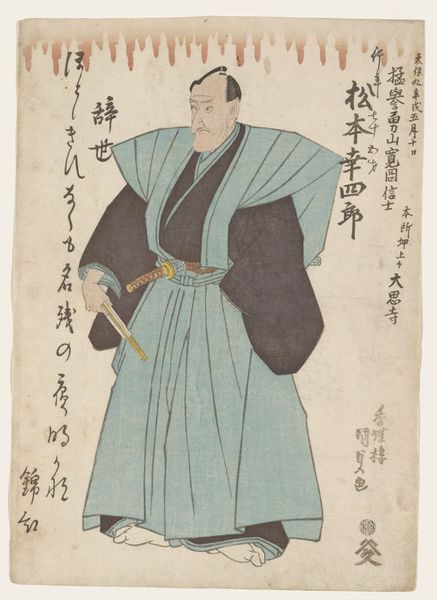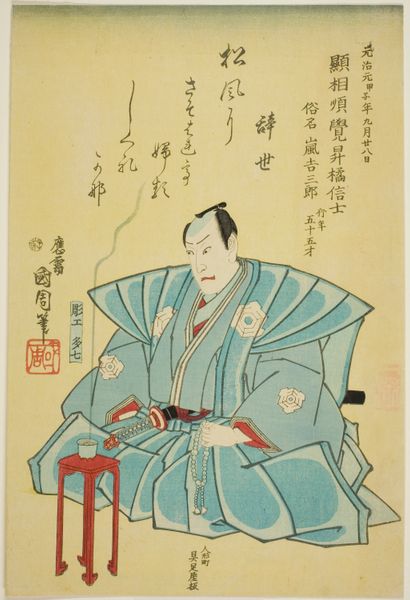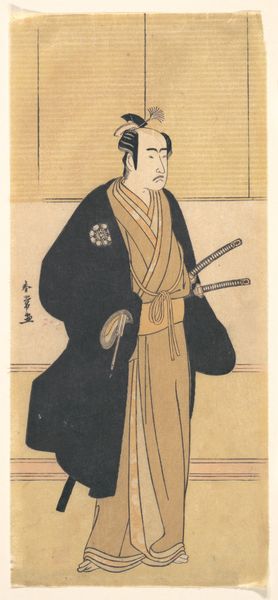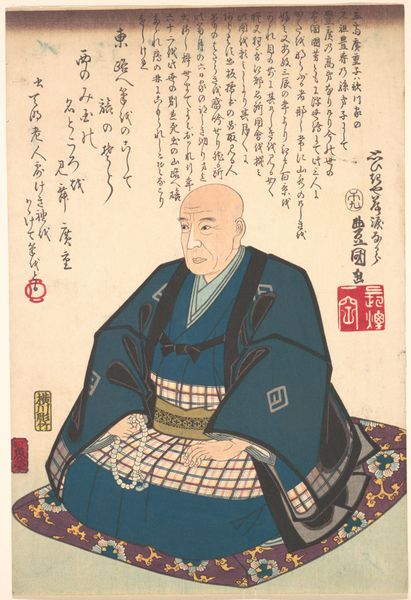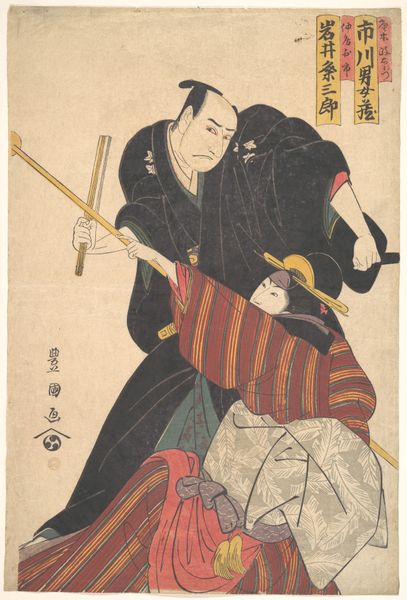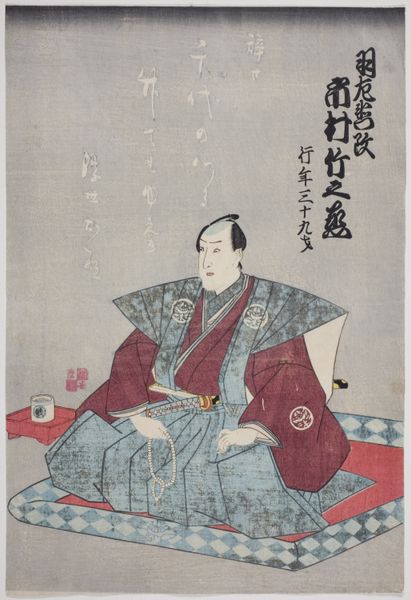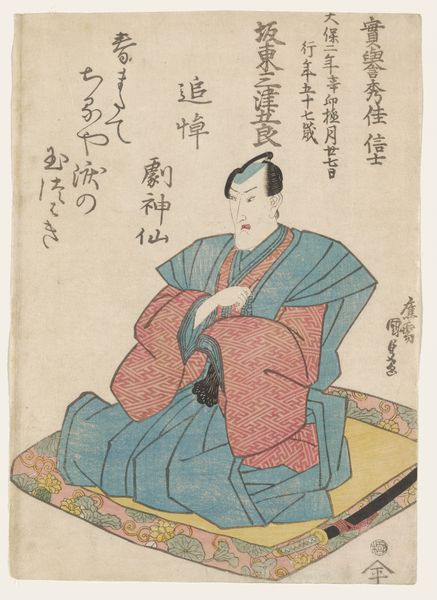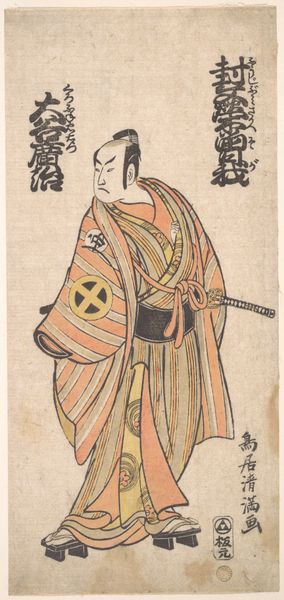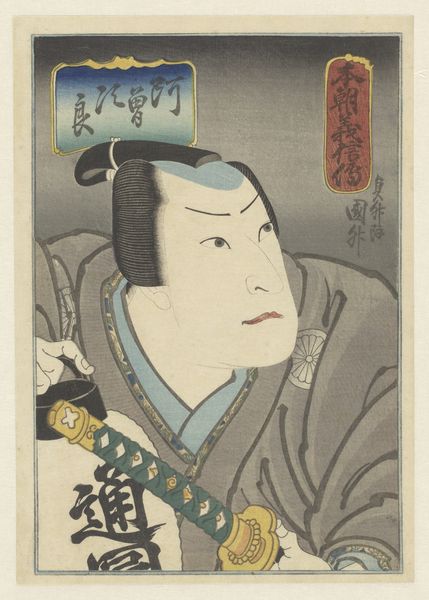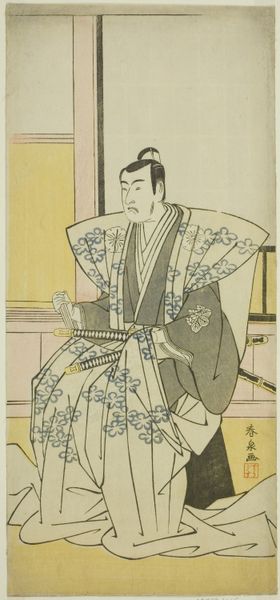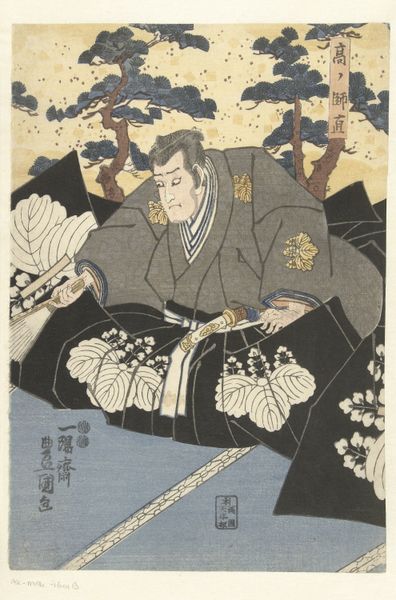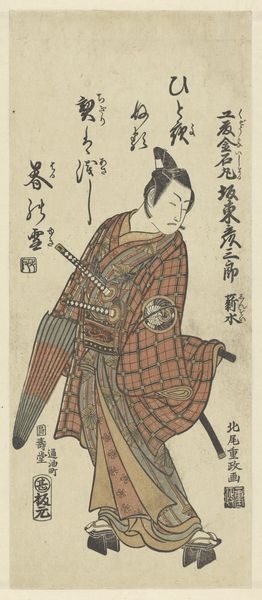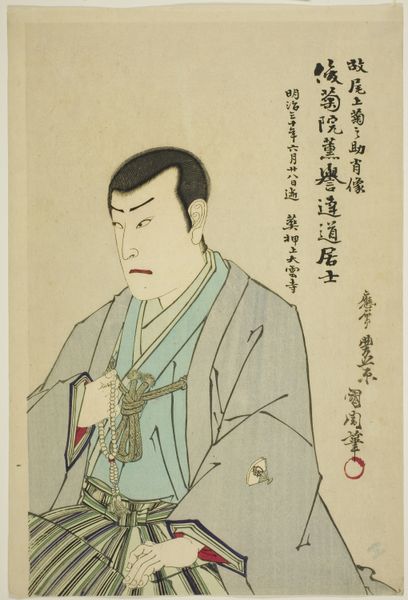
The Actor Sawamura Sojuro III in Ceremonial Attire on the Occasion of His Return from Osaka at the Nakamura Theater in the First Month, 1793 c. 1793
0:00
0:00
print, woodblock-print
#
portrait
# print
#
caricature
#
asian-art
#
caricature
#
ukiyo-e
#
woodblock-print
Dimensions: 32.7 × 14.6 cm (12 7/8 × 5 3/4 in.)
Copyright: Public Domain
Editor: Here we have Katsukawa Shun'ei’s woodblock print from around 1793, "The Actor Sawamura Sojuro III in Ceremonial Attire." It strikes me as both powerful and…a bit satirical, actually. How do you interpret this work, given its cultural context? Curator: The figure of the actor, especially in Ukiyo-e prints, carries a great deal of weight. It's not just an image of a person; it’s a carefully constructed representation that reflects social hierarchies, expectations around performance, and gender. Note the ceremonial attire, designed to project authority. But also observe the actor's slight smirk, and Shun'ei's own *exaggerated* style that hints at caricature. Does that challenge traditional notions of power? Editor: Definitely! It feels like it's simultaneously celebrating and questioning this actor's status. It’s like, "Yes, you’re important, but don't take yourself too seriously." Is there a connection between Ukiyo-e and other forms of social critique at that time? Curator: Absolutely. Ukiyo-e prints, while often catering to popular tastes, also operated as a space where social commentary could be subtly embedded. They allowed for a democratization of art; disseminating imagery beyond elite circles. By depicting actors, courtesans, and everyday life, they challenged traditional artistic subjects and hierarchies. And Shun'ei himself seems to use this print to examine fame, performance, and perhaps even challenge the audience’s perception of reality versus representation. What do you make of the backgrounds use of symbolism in relation to the Kabuki performer’s status in society? Editor: I see what you mean. The background looks more abstract, which almost creates the feeling that the Actor exists separately, in his own little space in society. That certainly is thought-provoking and a completely new point of view for me! Curator: Indeed. Shun'ei offers us a potent blend of admiration and critical distance.
Comments
No comments
Be the first to comment and join the conversation on the ultimate creative platform.
